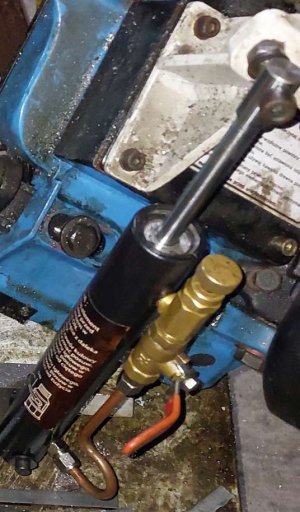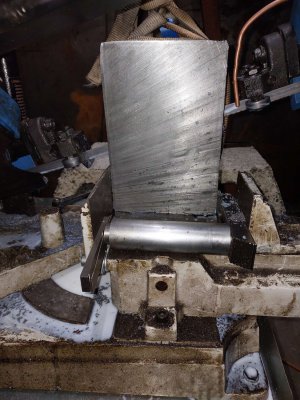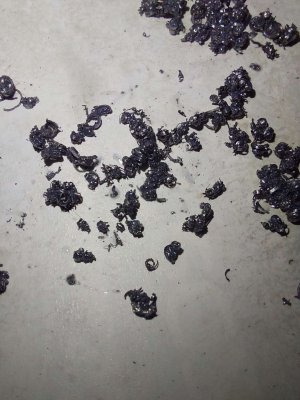I'm thinking that over time someone may have modified the original valve mechanism controlling the flow on your down feed dampener cylinder. If you look closely at the picture of the cylinder in the manual I posted earlier, you'll see that on page 29 there is a picture of the cylinder and the control valves. It has a needle valve at the top port connected to a ball valve just below it. Do you have both the needle valve and the ball valve? It sounds like you only have the ball valve. The needle valve is supposed to be used to control the flow. Once the flow is set the ball valve below it is used to stop and start the down feed. The ball valve is intended to be either fully opened or fully closed.
While a pinch valve may provide somewhat better control, I doubt it was used on this machine. A needle valve is relatively inexpensive and rugged enough to be the standard for this application. If you look at the pictures of my Startrite saw, you'll seek a black plastic knob on the front of the machine near the top center. That is the knob that opens and closes the needle valve which in turn controls the flow of the oil through the down feed cylinder. On the Startrite saw there is no second ball valve inline to stop and start the flow. The needle valve itself is opened and closed to set the flow rate and start and stop the flow.
Sorry, I missed your post and I just saw it now. I do have both the ball valve and the needle valve. Perhaps the angle on thd photos made it look different. Here is the zoomed up part. The needle valve has a brass knob on top.

The ball valve is beneath.
It wouldn't be unusual for those saws to get modified. I saw many versions of the same castings, but the cylinder seems similar to others. One difference is sometimes a needle walce with a black knob or a larger knob is used I think.
The ball valve is there as an extra feature advertised to "allow you to stop and start the feed without having to change the settings".
I'm curious, does your Startrite saw allow you to set the downfeed to let's say 10 thou per second (you would need a dial indicator with a mag base to see it) and if you leave it like this for few inches of travel. Will it stop or not? If I remember correctly from the photos your saw has both a movable counterweight and a spring in addition to the cylinder(if I confused it with someone else's I'm sorry). If this is the case could you set both to : weight to high, spring to low (so if the hydraulic feed was opened it would want to fall very fast) and control downfeed for very slow rate with just the needle valve?
I'm pretty sure any saw set like this with the same cylinder (with counterweights and spring taken out of equation) will stop too, but it would be nice to have a confirmation.


 and I haven't pushed it to the full yet. This is with the 6/10 blade.
and I haven't pushed it to the full yet. This is with the 6/10 blade.
